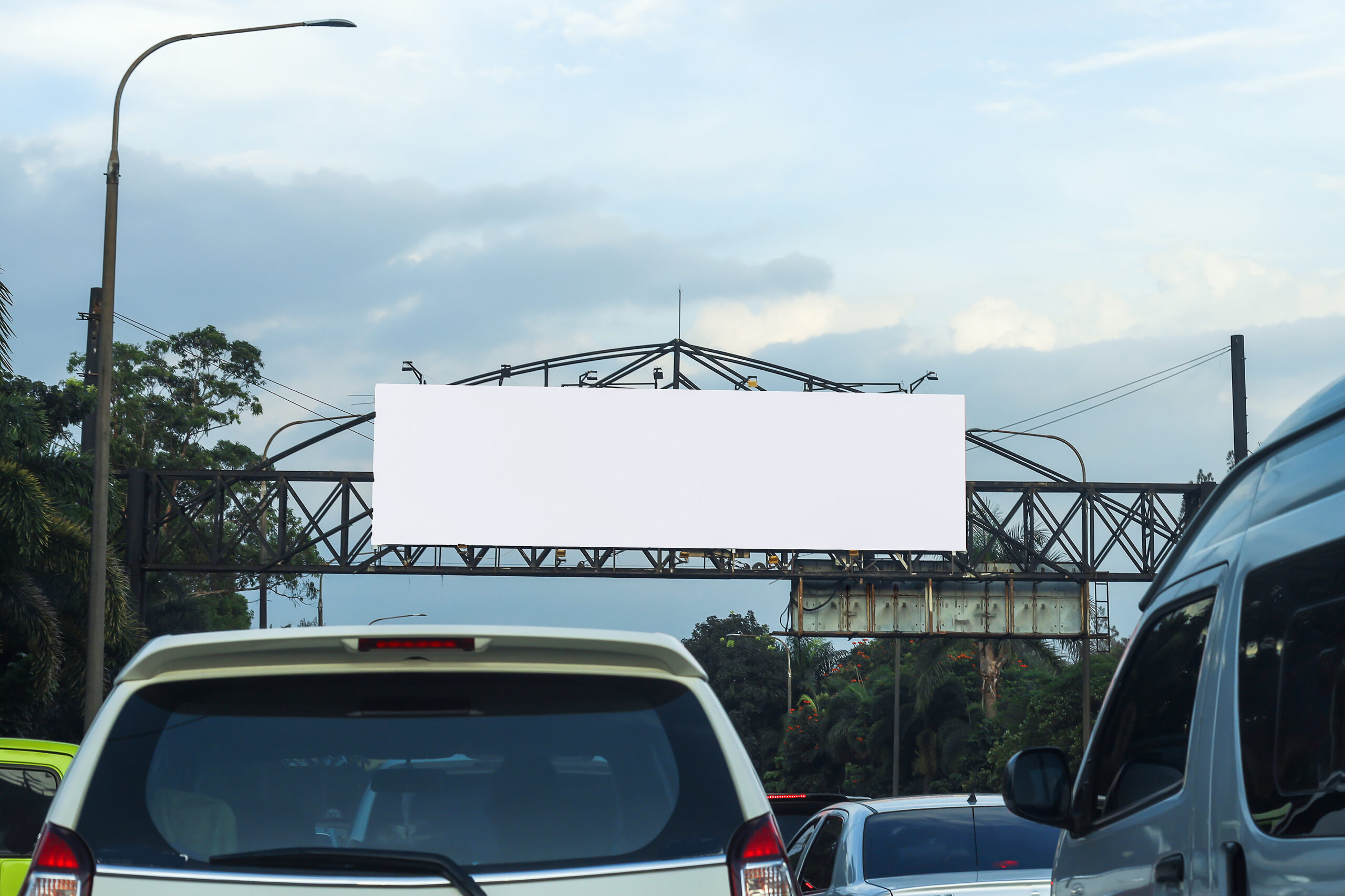Out-of-home advertising. What comes to your mind?
You might picture huge roadside billboards when thinking about outdoor advertising, and while that is a key part of it, one of the fun things about out-of-home ads is the wide variety of ways marketers can advertise. From displaying brand activations outside transit hubs to branding street pathways or filling windows in shopping centres, today’s marketers have an incredible array of opportunities to connect with audiences in the OOH space.
What is out-of-home advertising?
Out-of-home (OOH) advertising refers to highly visual and impactful media in public spaces. You can’t scroll past it, skip it, or close the tab. It exists in the real world, which means it has to compete with actual life for your attention.
And surprisingly, it often wins.
OOH advertising works so well because it’s placed in high-traffic areas that people walk, ride, or drive past every day. Its impact often runs deeper than we realise. Unlike digital ads that interrupt our experience, OOH blends into our surroundings, becoming part of the environment rather than a disruption. It’s contextual advertising at its best. A burger ad feels especially tempting when you’re stuck in traffic around lunchtime, and that gym membership billboard hits harder when you’re catching your breath on the subway stairs.
Solomon Partners’ 2023 benchmark report stated that out-of-home advertising produces the highest levels of consumer recall compared to other media channels, such as print, television, or digital media. This shows that OOH not only works, but works incredibly well. Its ability to capture attention in real-world environments makes it one of the most powerful tools for building brand awareness and staying top of mind.
Pros and cons of traditional and digital OOH
Today’s out-of-home advertising falls into two categories: traditional OOH, such as posters, billboards and art, or digital OOH, such as digital billboards, menu boards and public screens. Traditional and digital OOH can both get you where you’re going, but the ride will be very different.
Traditional OOH
Traditional billboards are up 24/7, rain or shine, offering a variety of unique advantages, including:
- Consistency — No downtime, no rotation, just constant visibility
- Long-term exposure — People see the same message repeatedly, building familiarity
- Your share of voice — Your message owns that space completely
- Reach goes far — Cost per thousand (1000 ad impressions) is typically significantly lower than other formats, creating more bang for your advertising buck
- 3D creativity — Nowadays, you can be creative with 3D elements and unconventional shapes
Disadvantages:
- Time-consuming and costly — It’s not the quickest way to advertise, compared to social media and digital platforms
- Not easy to update — Can be expensive if you need to make changes
- Can feel stale — Sometimes a message can hit well at the start and then die down when it isn’t regularly updated
Digital OOH
The flashy newcomer, digital out-of-home advertising brings TV-like capabilities to the outdoor world. These ads are dynamic, responsive, and always ready for their next performance.
The key advantages of DOOH include:
- Quick, cost-effective turnaround — Upload new creative in minutes, not days
- Support for all media — Video, motion graphics, and more can be done through digital OOH
- Real-time updates made easy — Spot a typo? Fix it instantly. Want to test different messages? Done.
- Contextual ads are easy to switch to — Weather, news alerts, traffic patterns, or even sports scores can automatically trigger specialised ads
- Ability to be bought programmatically (pDOOH) — Use data and algorithms to optimise placement and timing
Disadvantages:
- Quick moments — Most ads only remain visible for 8-10 seconds and your message needs to be punchy and immediately digestible for people to remember it
- Competition — Exposure time is shared amongst other advertisers and you’re part of a rotation, not the star of the show
- More expensive — comes with a premium price tag
Which is the better option?
Traditional OOH is perfect when you want sustained, undivided attention and have a message that can work long-term. Digital OOH is best when you need flexibility, want to test creative variations, or have time-sensitive campaigns that benefit from real-time optimisation.
However, the best part? With the right budget and creative team, you don’t have to choose just one. Many successful campaigns combine both formats, using static placements for consistent brand presence and digital spots for dynamic, responsive messaging.

How is the impact of OOH measured?
Modern OOH measurement goes way beyond “eyeballs that theoretically passed by.” Mobile location data tracks actual foot traffic, QR codes provide direct response metrics, and social monitoring captures organic conversation. Some digital installations use computer vision to analyse engagement while respecting privacy. This means OOH can now prove concrete business impact from website visits to store traffic to sales lift.
What does the future of OOH look like?
AI is making campaigns more responsive, 5G enables richer experiences, and sustainability drives eco-friendly innovations. The lines between OOH and other channels are blurring too. Programmatic platforms now include outdoor inventory alongside digital, creating seamless cross-channel experiences. We’re also seeing a rise in oversized marketing and guerrilla-style activations that command attention in bold, unexpected ways. It’s definitely a marketing channel that won’t disappear anytime soon.
Dominating the space
OOH has the power to create genuine moments of surprise in a world of algorithmic predictability. That’s because the best campaigns don’t just advertise; they make cities more interesting and commutes more memorable.
At Media Exchange, we help brands cut through the complexity and find OOH solutions that actually work. Whether you’re looking to dominate with traditional billboards, experiment with cutting-edge digital displays, or create a hybrid campaign that gets the best of both worlds, we’ve got the expertise and connections to make it happen.
Ready to drive results?
Let’s chat about how OOH can work for your brand.

